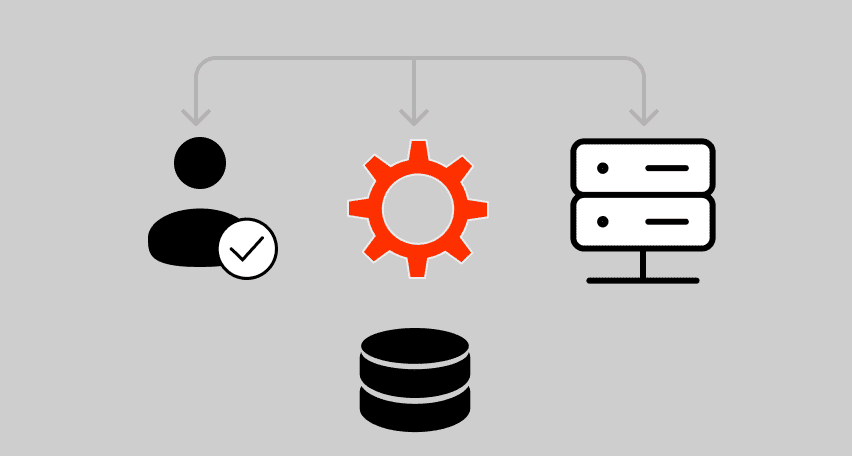The Role of Compatibility Testing in Software Development
With more and more popular smartphones and multiple mobile network operators, many more smartphones with different demands, brands and producers have been published.
With multiple mobile phone brands and hundreds if not thousands of network providers, the number of mobile devices continues to rise around the world. By 2020, mobile devices worldwide have reached an estimated 14.02 billion and their numbers are expected to reach 16.8 billion by 2023.
These devices are manufactured by competing brands and have different features, hardware, and software requirements. As a result, making mobile applications for these devices continues to be a challenge for software developers.
Not only do these devices have compatibility issues with competing mobile brands, but differences in firmware in a company’s own product line. These changes can pose significant problems for developers, as they need to ensure that their mobile applications are compatible with existing operating systems.
Mobile compatibility testing is indispensable during mobile application development and ensures that mobile apps work seamlessly across all operating systems and devices. In this article, we are going to discuss the role of compatibility testing in mobile app development.
What is Compatibility Testing?
Compatibility testing is a special type of software testing conducted to provide users with greater user experience. Instead of focusing on the functional aspects of the application, the testing evaluates the compatibility of mobile apps against specific hardware, software, and network requirements.
As a result, the testing process must ensure that the application works seamlessly across various hardware makes and models, browsers, and operating systems. The entire procedure verifies the compatibility requirements set during the planning stage of the project and it is usually conducted at the end of projects.
Categories of Compatibility Testing
Software compatibility testing allows mobile developers to ensure improved performance of applications on different platforms and device configurations. Therefore, there are several categories of compatibility testing. Although there are two main branches of compatibility testing, they are subdivided into further categories that are enlisted below:
Hardware Compatibility Testing
The procedure conducted during hardware compatibility testing includes the testing of applications with differing hardware while ensuring the accuracy of its core functions.
Operating System Compatibility Testing
During operating system compatibility testing, testers evaluate the performance of a given application with different operating systems such as iOS, Mac OS X, Android, Windows, Linux, etc.
A number of computers and devices are designed according to specific hardware architecture. As a result, they support operational features that only work on certain operating systems. Without OS compatibility tests, there is no way of knowing whether the software works as intended on a given operating system.
Software Compatibility Testing
Software Compatibility Testing is performed to evaluate the compatibility of software applications against other software components in a system.
Browser Compatibility Testing
Browser compatibility testing refers to the testing procedure of software or websites on popular web browsers such as Google Chrome, Safari, Mozilla Firefox, and Microsoft Edge, etc.
Device Compatibility Testing
Devices Compatibility Testing is required to evaluate the compatibility of input and output devices with a given website, mobile application or web app. These devices can include printers, Bluetooth, USB devices, and scanners.
Network Compatibility Testing
Network compatibility testing consists of testing procedures that measure the performance of a software system against various networking parameters, like network, operating speed, network capacity, connection bandwidth, etc. At the same time, it is also responsible for verifying the operation of applications in networking systems. For high-performance API architectures, using a gRPC load testing tool ensures robust and scalable services, enhancing the efficiency and reliability of gRPC-based applications in various networking environments.
Mobile Device Compatibility Testing
Mobile Compatibility testing refers to specific testing of software applications and their suitability with mobile devices. These mobile devices can have different operating systems, hardware and software requirements and the application must meet these requirements to pass the testing phase.
Software Version Testing
Multiple software are available in a number of different versions. Therefore, it’s common for applications to face problems performance issues while operating on newer or older versions of the software. With the help of version compatibility tests, software testers can evaluate the performance of a given application on various versions of the software.
Types of Compatibility Testing
While there are many categories of compatibility testing, each of the software testing procedure is executed with the help of two different testing types.
Forward Testing
The forward testing type checks the validity of software applications with updates in software it has to interact with or with the patch updates of operating system versions.
Backward Testing
In backward testing, software testers evaluate whether a given application is suitable to the latest versions of a system, as well as older versions of the same system. For instance, if you are conducting backward application testing for an application for Windows OS, you may check the compatibility of the application not only with newer versions of its OS (Windows 10), but also the previous versions (Windows 7, or Windows XP, etc). After conducting these tests, you may observe and evaluate any changes in application behavior in these different environments.
The Goal of Mobile Compatibility Test
Mobile compatibility testing is essential for ensuring the optimal performance of mobile apps. The goal of the testing procedure is to examine hardware dimensions in a mobile device. These hardware dimensions may include components like the motion sensors, GPS and navigation capabilities, camera (resolution and type), processing speed, screen (size, resolution, or rotation), main memory, etc.
At the same time, it’s essential to check software dimensions like API compatibility, multimedia support, and compatibility of software features with the mobile application.
Lastly, human interaction with phones is considered a separate compatibility dimension for mobile applications. Testing parameters for this dimension include issues like accessibility requirements, user experience, language support, localization, the functional environment of the application (i.e. business, sports, finance, medical, etc.).
Mobile compatibility testing is reserved for the testing of mobile applications. Therefore, the main goal of the testing procedure is to ensure that the final version of the mobile app functions as intended on different devices of various models and makes.
With that said, it can involve components of other compatibility testing procedures. This means that you will test the compatibility of your mobile app with everything it has to interact; ranging from mobiles, browsers, and networks to operating systems, databases, and hardware platforms. s a result, software testers are able to detect any inherent problems with the application before its release into the market.
Importance of App Compatibility Testing
Nowadays, the competition between mobile applications is fierce. As a result, a mobile application that reflects true value for its users is the most successful. However, it is impossible to ensure the best quality of your mobile application without conducting proper testing for your mobile application.
Software teams need to perform several software tests at different stages of the software development lifecycle prior to the release of the application. The testing ensures that you have a competitive edge over those vendors who don’t perform these essential tests.
Since it helps you detect any significant issues in the application, you can resolve these problems before the product’s release to the market. Compatibility testing ensures the quality of your end product and is able to provide great value for its cost.
Advantages of Compatibility Testing for Mobile Applications
Mobile compatibility testing is a significant component of mobile app development. It leads to several benefits for the software team. To understand these benefits clearly, consider releasing a mobile app without a compatibility test.
Since the application has not been tested on different platforms, problems will start to emerge as soon as the application hits the app store. Users will start to complain about the issues they are facing in terms of performance, user experience, interface graphics and app navigation.
In the worst cases, the lack of compatibility testing can even affect the functional capabilities of your application. It’s possible for some core functions of the application to stop working under a new operational environment. Therefore, the lack of compatibility testing can set your mobile application for failure.
At the same time, the software team will not be able to enhance the software development process by leveraging the feedback attained via compatibility testing. Therefore, they will fail to capture key information about the application’s stability, usability, and scalability.
Lastly, because most compatibility issues are identified only through feedback, the team will know about these issues after the application release. As a result, resolving these problems will incur significantly higher costs to the team and would be additionally complex, as well.
On the other hand, by performing compatibility testing your team can verify the business and user capabilities of the mobile application. It will be optimized for greater quality and performance and thus, yield greater user satisfaction.
Being able to provide a great user experience means that your application will also be subject to referrals and recommendations. Consequently, the application would be able to acquire a significant user base at a much faster rate.
Steps of the Device Compatibility Test Process
You can perform compatibility testing by using various tools. Depending on the tool you use, the testing procedure for compatibility may differ. However, in most cases, the testing process consists of four main steps.
Designing Test Cases & Configuration
In the first portion of the testing procedure, the software team designs various configuration settings and test cases for the application. With that said, before beginning this phase, it’s essential to pre-determine which platforms and configuration you will be testing your application for. For instance, if you are designing an application specifically for Android, there is no use of conducting compatibility tests in an iOS environment.
During the procedure, it’s important to have a team of experienced testers within your testing team. Without the in-depth knowledge of the testing procedure, it would be difficult for your testing team to notice minor differences in application behavior.
Set up of Test Cases & Environment
After determining the environment and designing test cases, you should proceed with setting up the environment and the relevant test cases for the project.
Result Generation and Analysis
In the third step, the team must execute the compatibility test and examine the results in detail afterward. The team should list down all discrepancies, or issues identified during the testing procedure. These issues can later be forwarded to relevant members of the team who can fix these issues.
Rectification & Retesting
After the submission of the final testing report, the project manager needs to check whether the detected problems were resolved by the team. Once these defects are resolved, it’s time to retest and resolve prevalent bugs until none of them are left in the application.
Tools for Mobile App Compatibility Testing
Mobile app compatibility testing tools ensure that the application has the optimal level of quality t its users. There are several mobile testing tools available o the internet, however, the following are some of the most reliable ones out there.
TestComplete Mobile
TestComplete offers its user extensive features for mobile app compatibility testing. With the help of this tool, users can create and execute repeatable and flexible tests on the user interface. These features are available for all mobile applications regardless of whether they are native or hybrid.
You can perform automated UI tests on virtual machines, emulators, and even real mobile devices without having to root or jailbreak these devices.
Experitest
Experitest is a reliable mobile testing tool that provides its users with accelerated mobile testing cycles. As a result, the software can improve the quality of their product significantly and also perform high-volume automated in Android systems.
Ranorex Studio
Ranorex Studio is a mobile application compatibility testing platform that offers an all-in-one solution for all your mobile testing needs. The tool has an intuitive interface and enables software teams to perform powerful automation operations. At the same time, it supports compatibility in iOS and gives users the opportunity to test mobile web apps and native mobile apps.
Mobile Device Compatibility Test Service in PFLB
In conclusion, mobile compatibility testing is essential for the success of any mobile application. It ensures that the mobile application works seamlessly with any platform, software, configuration, browser or hardware it has to interact.
Furthermore, the testing procedure minimizes the total errors hidden in the application and it ensures that the software team delivers the best quality of product to its users. PFLB is a software testing service that has experience of serving over 500 companies across all domains, from finance and healthcare to retail and technology. With years of experience at their disposal, they can ensure that your mobile application offers a great experience for your users and outcompetes rival applications. By trusting on their expertise, you can benefit from other core software testing services, ranging from reliable Performance testing services, Usability Testing, and Mobile Testing to Integration Testing, Test Automation, and much more.
Related insights in blog articles
11 API Failure Causes and How To Solve Them

When an API fails, the consequences ripple quickly through the entire system. Transactions stall, integrations break, and frustrated users flood your support channels. Understanding exactly why API failures happen — and how to fix them — is essential for developers and businesses alike. This article examines the most common reasons behind API failures, explores the […]
API Mocking: A Complete Guide

Waiting for APIs to become available or stable can slow down entire projects. API mocking provides a smart way to avoid these roadblocks by simulating real API responses, keeping your teams productive and ensuring smoother integration down the line. In this guide, you’ll discover exactly what API mocking involves, how it differs from using real […]
API Endpoint: A Complete Guide

Modern applications rely heavily on APIs (Application Programming Interfaces) to communicate and exchange data across different systems. At the heart of this interaction lies the API endpoint — a fundamental concept that defines where and how data exchanges happen. This guide explains clearly what an API endpoint is, outlines its importance, and provides practical insights […]
gRPC vs. REST: Detailed Comparison

Choosing between gRPC and REST can feel confusing, especially if you’re trying to figure out the best way for your applications to communicate. This article breaks down the grpc vs rest comparison clearly, without jargon or confusion. You’ll learn exactly what each protocol is, the advantages and disadvantages of each, and understand why gRPC is […]
Be the first one to know
We’ll send you a monthly e-mail with all the useful insights that we will have found and analyzed
People love to read
Explore the most popular articles we’ve written so far
- Top 10 Online Load Testing Tools for 2025 May 19, 2025
- Cloud-based Testing: Key Benefits, Features & Types Dec 5, 2024
- Benefits of Performance Testing for Businesses Sep 4, 2024
- Android vs iOS App Performance Testing: What’s the Difference? Dec 9, 2022
- How to Save Money on Performance Testing? Dec 5, 2022